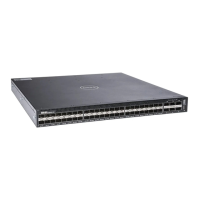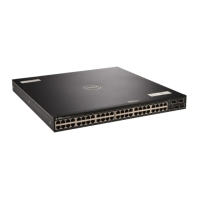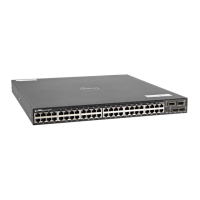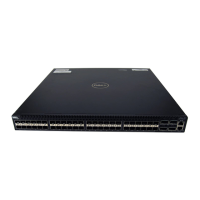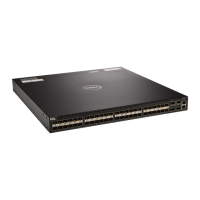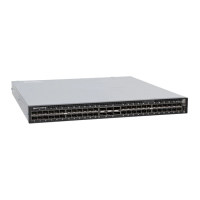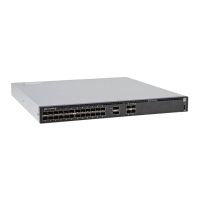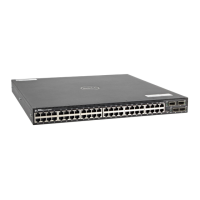To configure IP VLAN and DSCP match criteria in a Layer 3 class map, and apply the class and policy maps to
a service queue:
1 Create a match-any or a match-all Layer 3 class map, depending on whether you want the packets to
meet all or any of the match criteria. By default, a Layer 3 class map is created if you do not enter the
layer2 option with the class-map command. When you create a class map, you enter the class-map
configuration mode.
CONFIGURATION mode
Dell(conf)#class-map match-all pp_classmap
2 Configure a DSCP value as a match criterion.
CLASS-MAP mode
Dell(conf-class-map)#match ipdscp 5
3 Configure an IP VLAN ID as a match criterion.
CLASS-MAP mode
Dell(conf-class-map)#match ip vlan 5
4 Create a QoS input policy.
CONFIGURATION mode
Dell(conf)#qos-policy-input pp_qospolicy
5 Configure the DSCP value to be set on matched packets.
QOS-POLICY-IN mode
Dell(conf-qos-policy-in)#set ip-dscp 5
6 Create an input policy map.
CONFIGURATION mode
Dell(conf)#policy-map-input pp_policmap
7 Create a service queue to associate the class map and QoS policy map.
POLICY-MAP mode
Dell(conf-policy-map-in)#service-queue 0 class-map pp_classmap qos-policy
pp_qospolicy
Classifying Incoming Packets Using
ECN and Color-Marking
Explicit Congestion Notification (ECN) is a capability that enhances WRED by marking the packets instead of
causing WRED to drop them when the threshold value is exceeded. If you configure ECN for WRED, devices
employ this functionality of ECN to mark the packets and reduce the rate of sending packets in a congested,
heavily-loaded network.
ECN is a mechanism using which network switches indicate congestion to end hosts for initiating appropriate
action. End hosts uses two least significant bits of ToS to indicate that it is ECT. When intermediate network
node encounters congestion, remarks ECT to CE for end host to take appropriate action. During congestion,
Quality of Service (QoS) 865
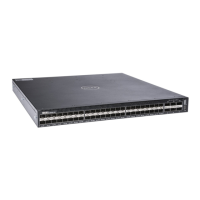
